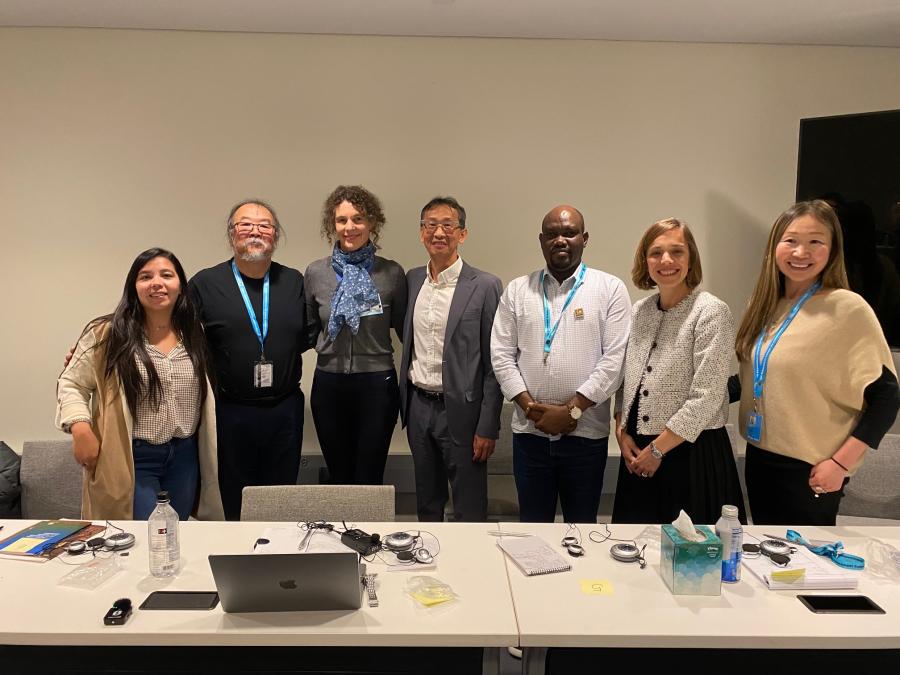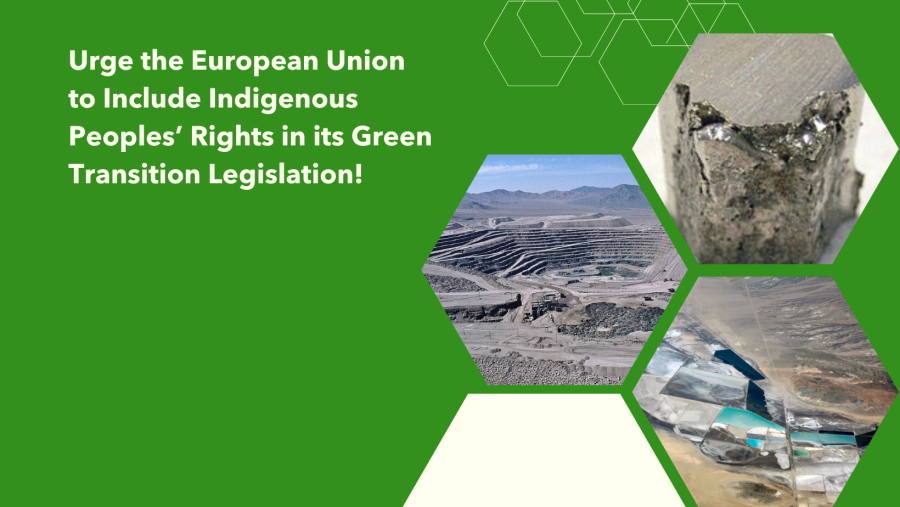Work, buy, consume, die" - graffiti scrawled across a redevelopment project fence in downtown Palo Alto, California. The way we work, what we buy, our levels of consumption - all these contribute to how we die. For some reason this graffiti comes to mind as I ponder the current media fix on "Earth Crisis," the growing demands for structuring and supporting a sustainable lifestyle, and the booming segment of the tourism industry that capitalizes on the vanishing wilderness, wildlife, and "wild people."
People around the world have come to recognize the relationships among economy, lifestyle, and a degraded environmental reality. We come across demands to foster sustainable economic activities in scientific literature, the popular press, and, to some degree, in the resource management policies, if not strategies, of local, national, and international entities. Environmentalism has apparently moved beyond doomsday prophesizing to promoting a quick fix that promises social justice and a healthy environment. "Sustainable development" appears to be that fix. In many places of the world where unique lifestyles and settings are threatened, people at all levels of the development system are planning and promoting tourism as the sustainable industry of choice.
"Tourism is the world's second largest export earner, generating approximately US $79 billion annually. Only the oil business generates more." So began the introduction to Cultural Survival Quarterly's first issue on tourism ("The Tourist Trap: Who's Getting Caught?"), published in the summer of 1982 - an issue that critically explored the benefits of tourism development. In the years since, numerous articles, journals, and books have presented a wealth of case-specific data documenting the cultural, social, and environmental costs of hosting a tourist industry (c.f., overview of tourism research contained in Smith [CSQ 14(2)]. These years have also witnessed the continued expansion of the tourism industry. Tourism, in spite of the world recession of the early 1980s, has surpassed both weapons and oil industries to hold the title of the world's largest export earner.
The 1982 CSQ tourism issue paints a picture of tourism as an industry that capitalizes on ways to feel good. That issue, as well as these two [the articles on tourism are contained both in CSQ 14(1) and CSQ 14(2), gives the reader a sense of the complex dynamics that occur as tourism development inserts a new group of resource users into the economic and social scene. Some articles present the positive side of tourism, emphasizing the way in which cultures, in redefining tradition and handicraft as economic commodities, have been transformed and, to an extent, revitalized. Other articles touch on the negative experiences, highlighting changes in the definition and value of critical resources as they are used to meet the externally defined needs of the tourist. The growth of tourism has changed the pattern of societal control over critical resources as different groups gain or lose ownership, access, and use rights and as resource management decisions prove to meet the interests of a tourism industry first and a resident society second. As a result, cultural values shift and social relations are strained as the identity and role of the host society is redefined by the needs of the service industry and, at a more fundamental level, by the images projected by the society's guests.
The social and environmental pains of birthing and supporting a tourist economy take on new meaning when we consider the growth in the industry itself and the resurgence in targeting tourism as a strategy for national development. People are demanding a more sustainable approach to development; in many cases, tourism comes up as the economic mode of choice. Emphasis is put on expanding involvement in the "alternative tourism" sector, or, as the World Tourism Organization now terms it, "responsible tourism" [see Smith's discussion in CSQ 14(2)]. As these calls translate into action, and as international agencies, national governments, and indigenous groups invest their time and money to build alternative tourism ventures, it becomes all the more important to ask: Is tourism development?
Can tourism, an industry that inherently creates dependency relationships, truly be tailored in a socially responsible and environmentally viable fashion? If so, how do we structure "responsible" tourism? How do we measure its success in achieving "sustainability"? How do we manage to balance longterm social and environmental needs with the desire for current profit and future economic growth? We ask these questions in an effort to move beyond the cost/benefit debate, to identify the range of strategies utilized in coping with the problems associated with the introduction and growth of tourism.
"Alternative" Tourism
So what is "alternative," or "responsible," tourism? This industry appears to have almost as many names for itself as it does ventures: academic, alternative, adventure, eco, nature, responsible, small-scale, and soft-path tourism to name a few. As to what activities fall under the rubric of "alternative tourism," a quick glance through the "Directory of Expedition and Adventure Services" in Outside Magazine reveals a travel industry with as many variations as there are tourists. We find tours from Cusco to the Amazon by bike. "Shatter your altitude record on Mexico and Ecuador volcanoes." One Hawaiian adventure tour promises that you can "do and see it all with natural history specialists!" Another tour offers unique accommodations and gourmet meals served in distinct jungle lodges and environments of the "unspoiled Amazon," where the traveler will hike jungle trails, travel in dugout canoes, fish, and view the world's highest bird species and tree count. On your vacation you can build and improve US national forest and park system trails or pay for the pleasure of working with archaeologists on a real "dig." You can attend a "dynamic mobile environmental education program that lets you earn a graduate, undergraduate, or high school degree. Journey through the US and Canada studying ecology, society, and discovering yourself" (Outside 1989:119-127).
At one extreme are the tours for the elite. The New Yorker (19 June 1989, p. 81), for example, advertises a tour where you can
discover masterpieces of both man and nature in an unprecedented adventure by luxury private jet. View the mysterious monuments of Easter Island with prominent archaeologists. Locate rare colonies of king penguin, albatross, and elephant seal with expert naturalists. Explore the Andes and the Amazon, Patagonia and Tierra del Fuego, the Falkland Islands and Antarctica in a style never before possible... 11 to 29 days: $9950 to $27,950.
At the other end of the travel market are some of the tours advertised in Outside, Natural History, and Sierra. You can design your own tour of the US Southwest with the assistance of a product offered by "Harbinger House": for $29.95 you receive a tour brochure and book that will allow you to "tour the secret power places of the desert southwest. Create your own personal mythology. Attune to the healing messages of desert creatures through a beautifully illustrated book of incantations and `on-location' workshop (Sierra "Adventure," November/December 1989, p. 119).
These examples represent efforts to sell the "exotic" to support a for-profit economic activity. Other people offer similar trips to make money for their "nonprofit" organizations, and most universities offer adventure tours as a way to raise funds for research and other activities.
As an anthropologist, I sense an uncomfortable familiarity in these descriptions of the "alternative"tourism industry in that they resemble that which anthropology is built upon: studying and experiencing the "other" firsthand. Anthropological field work, in its concern with rapidly disappearing cultures, lifestyles, and ecosystems, can be viewed as a form of "alternative" tourism. The difference is that rarely do we as anthropologists structure our academic efforts with an economic profit motive in mind. Alternative tourism represents an industry whose ventures capitalize on the increasing global concern with disappearing cultures, lifestyles, and ecosystems.
"Responsible" Tourism
But the vision of responsible tourism includes more than this potentially exploitative relationship. Responsible tourism encompasses those ventures that are consciously designed to enhance the socioenvironmental milieu of the host while educating and entertaining the guest. These ventures sell the "exotic" to gain money, labor, and/or foreigner presence - all in an effort to restore a degraded environment while attacking the roots of social inequity. For example, Co-op America's "Travel Links" program and the Pax World Friendship Tours promote the concept of world peace through educational travel, sending their tourists to areas where US foreign relations are strained. Travelers are guests in the homes of the local people, and they donate their time and energy to build community development projects and typically use a portion of the tour fees to support local conservation and social action programs. Examples of this "soft-path" tourism can be found throughout the world - from the war-torn coffee fields of Nicaragua where foreign students and civic and church groups work with their hosts to bring in the harvest, to the hospitals of Vietnam where US veterans return and volunteer their labor.
Responsible tourism also includes conservation and development ventures such as Guanacaste National Park in Cost Rica (see Hill, p. 14). Reacting to a rapidly degrading environment and capitalizing on a US mania for tropical rain forests, long-term participants in Costs Rica's academic tourism industry canvassed stateside conservationists and raised funds to acquire dry, cloud, and rainforest land. Dedicated as a Costa Rican National Park and UNESCO-MAB Biosphere Reserve in July 1989, the primary goal of the Guanacaste project is to restore degraded pasture lands to "dry forest" habitat while encouraging sustainable activities. In this case, national park development emphasizes Costa Rican recreational and educational needs first and foreign tourists second. It also provides employment and training opportunities in park maintenance, management, and habitat restoration research for area residents (Janzen 1988:156).
Plans for national economic development typically conflict with local-level socioeconomic needs, both of which conflict with conservation and biodiversity concerns. The Costa Rica case, along with a few other publicized examples of integrated development/resource management, has captured the imagination of many. Examples like these play an essential role in structuring the popular concept of "Sustainable development," in which activities such as soft-path tourism or ecotourism are promoted as alternatives to the more destructive forms of development. Unlike mineral extraction, energy development, or timber harvesting, this "alternative" requires nominal capital investment and relies on a basic lack of infrastructure. Tourists visit the locale because it is remote, the people are different, and the environment is "pristine." Thus, the long-term success of the tourist industry depends on maintaining social and environmental integrity. It is this vision of a fruitful marriage between the concerns of environmental quality and social justice, brought together through the holy bonds of tourism, which prompts natural scientists, politicians, conservationists, human rights activists, and a myriad of other professional problem solvers to actively assist efforts to build infrastructure and promote the growth of tourism.
Does It Work?
Do alternative tourism efforts actually bring about sustainable economic activity? There is an urgent need to address this question. Almost every nation on the face of the earth is trying to structure some way to increase its share of the tourist market, and many are doing so in a way that capitalizes on the "earth crisis." In some cases people have been blindly applying the buzzwords ecotourism, soft-path tourism, and sustainable development to national and international development schemes, promoting and acquiring funding for these schemes because of the labels they wear. Many of the articles in these two issues on tourism show that uncritical acceptance and endorsement of a project merely because it is termed "alternative" or "sustainable" is naive and potentially dangerous.
Farrell [CSQ 14(2)], in analyzing attempts to design sustainable tourism on Hana, Hawaii, paints a not uncommon picture. While one hand of the developer works with the community to structure socially and environmentally sensitive resort development - thus gaining community and government endorsement - the other hand busily uses the zoning and permits won to structure a sellout deal to another investor, manipulating the community while making a profit.
Gordon (p. 6) and Hitchcock [CSQ 14(2)], in their articles on game parks in the Kalahari, show the ways in which conservation and development projects are often designed and implemented in a political context in which indigenous people have minimal voice in policy and management. Resource access and use restrictions established to protect wildlife habitat threaten the livelihood and, in some cases, the very lives of indigenous people.
On the flip side of the coin, Puntenney [CSQ 14(2)], in describing the evolution of a resource management plan for a Nepalese national park, presents ways to improve the livelihood and lives of indigenous people by increasing the political power of their voice in the decision-making process. Sutton [CSQ 14(2)], in his description of the problems and strategies used to manage a tiger conservation park in northern India, presents a similar set of ideas of this problem of balancing the resource access and use needs of the people while maintaining a wildlife habitat.
Tourism has often been presented as the lesser evil in development options. This is certainly the case in May's [CSQ 14(2)] article on the Haida experience with ecotourism, and it is this notion that Daltabuit and Pi-Sunyer (p. 9) react to in their discussion of "La Ruta Maya." This idea of marketing the ecological diversity and cultural heritage of the Yucatan via a highway linking ancient cities and a patchwork system of biosphere reserves in unique only in the scale of development. Daltabuit and Pi-Sunyer, in discussing 10 years of cumulative research on the adverse effects of archaeotourism in the Yucatan, demonstrate that the long-term social and ecological impacts of projects such as the proposed La Ruta Maya deserve more than the dentist office coffee-table book treatment given by National Geographic.
The role of power structures in defining the face and form of cultural tourism is also a common theme in the articles in these two issues of the quarterly. Power structures, whether based within the indigenous community, the state, or the international tourist market, often determine where tourists visit, what they see and do, and who, among the indigenous population, receives the economic benefits of hosting and servicing the guests. Adams (p. 31) explores this dynamic in discussing public participation and conflict between local and national power structures in Toraja, Indonesia. Sweet [CSQ 14(2)] presents a similar discussion of tourism in the US Southwest, where a multiplicity of power structures regulate tourism and define the level of local involvement in the marketing of culture. Swain (p. 26) discusses the effects of the Chinese government in defining the levels of minority group involvement, demonstrating some of the positive and negative impacts of the "commodification of ethnicity." Mirante (p. 35) gives a powerful account of how different power structures in Burma created a tourist market and built a small-scale tourist industry around two Padaung women marketed as living artifacts of an archaic way of life.
For most of the cases in these two issues, the tourism experience is a "mixed bag." Adventure travel and mountaineering expeditions in he Himalayas, for example, have resulted in deforestation and desertification, devaluation of tradition, and social fragmentation, (c.f., Goering's description of Ladakh, Puntenney's description of Nepal, and Klieger's description of Tibet). In each of these places, however, as well as in Swain's description of indigenous tourism in China, tourism, by publicizing the status and conditions of indigenous peoples, protects their independent minority status. Further, hostguest interaction often instigates a social process of identity crisis, reconstruction, and reaffirmation resulting in a revitalized culture and increased cohesion in the community [see, for instance, Nixon's article in CSQ 14(2) and Klieger's article in CSQ 14(2].
Perhaps one of the most significant responses to the problems of tourism is the emerging participation of indigenous peoples in studying, discussing, and devising strategies to control or capture control over the development decision-making process. In Costa Rica, a university degree program in ecotourism presents a significant step toward transforming the control over that industry from North American to Costa Rican guides and tour operators (see Hill, p. 14). Training Costa Rican residents in the Guanacaste National Park to conduct tropical ecological research is also a significant step in transferring control over the research, management, and public education sectors of the tropical ecology industry. As Chapin (p. 42) has discussed here and in earlier issues of Cultural Survival Quarterly, the Kuna, in an effort to maintain control over their territory, have embarked on a similar path of structuring indigenous involvement in ecotourism and tropical rainforest research in Panama. Kuna efforts to bring different indigenous groups together to discuss common problems and future directions also represent a significant trend, one which is replicated by the reports and calls for action from the conferences reported in this volume (see articles by Colter and Dabek [p. 48] and van Lennep [p. 46]). Empowerment starts with access to information, and conferences such as these are a first step in that direction.
In answer to the question of whether "alternative tourism" is compatible with the ideals of "sustainable development," the articles contained in these volumes clearly indicate that a socially responsible and environmentally viable tourism cannot be fostered without a dialogue constructed and controlled along indigenous needs and in indigenous terms. The indigenous voice in the development and management decision-making processes must carry real political weight. Further, as illustrated in the case of the Kuna, tourism ventures, no matter how sensitive in their design, will fail if there is no national effort to market them, and move tourists in. For those grappling with the problems of development, it is time to quit arguing about the existence, dimensions, and characteristics of the "tourist trap" and start focusing on ways to build or restructure a way out.
Article copyright Cultural Survival, Inc.



